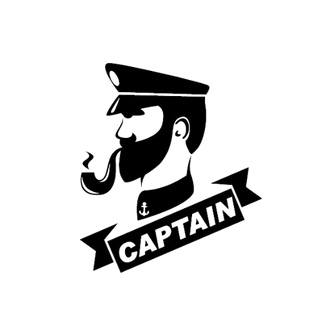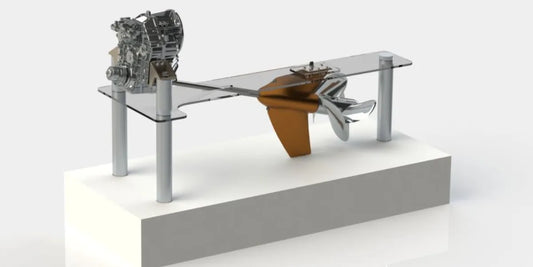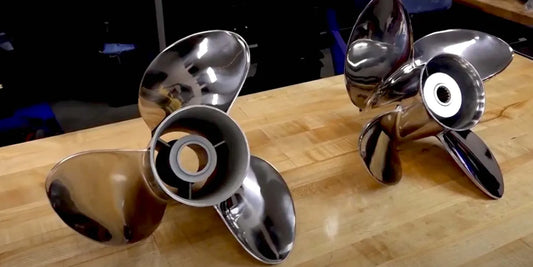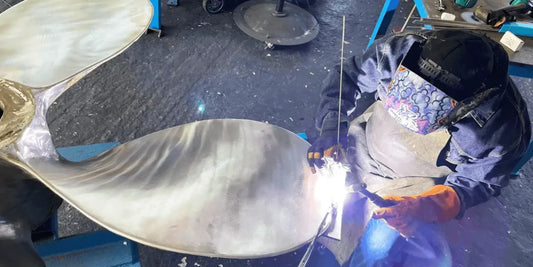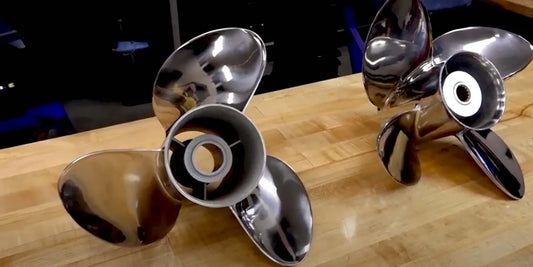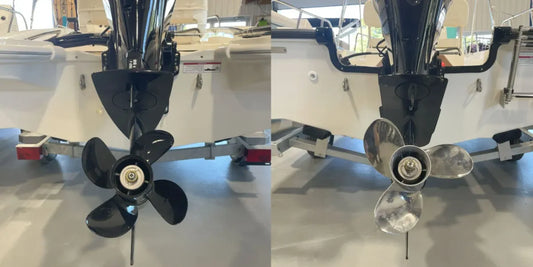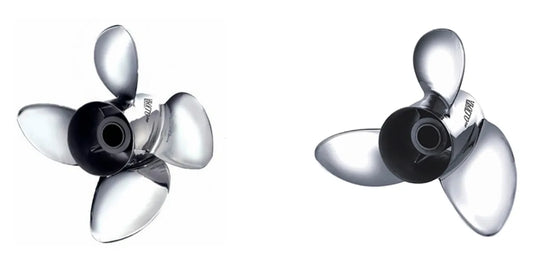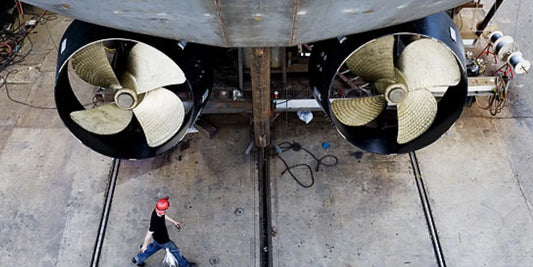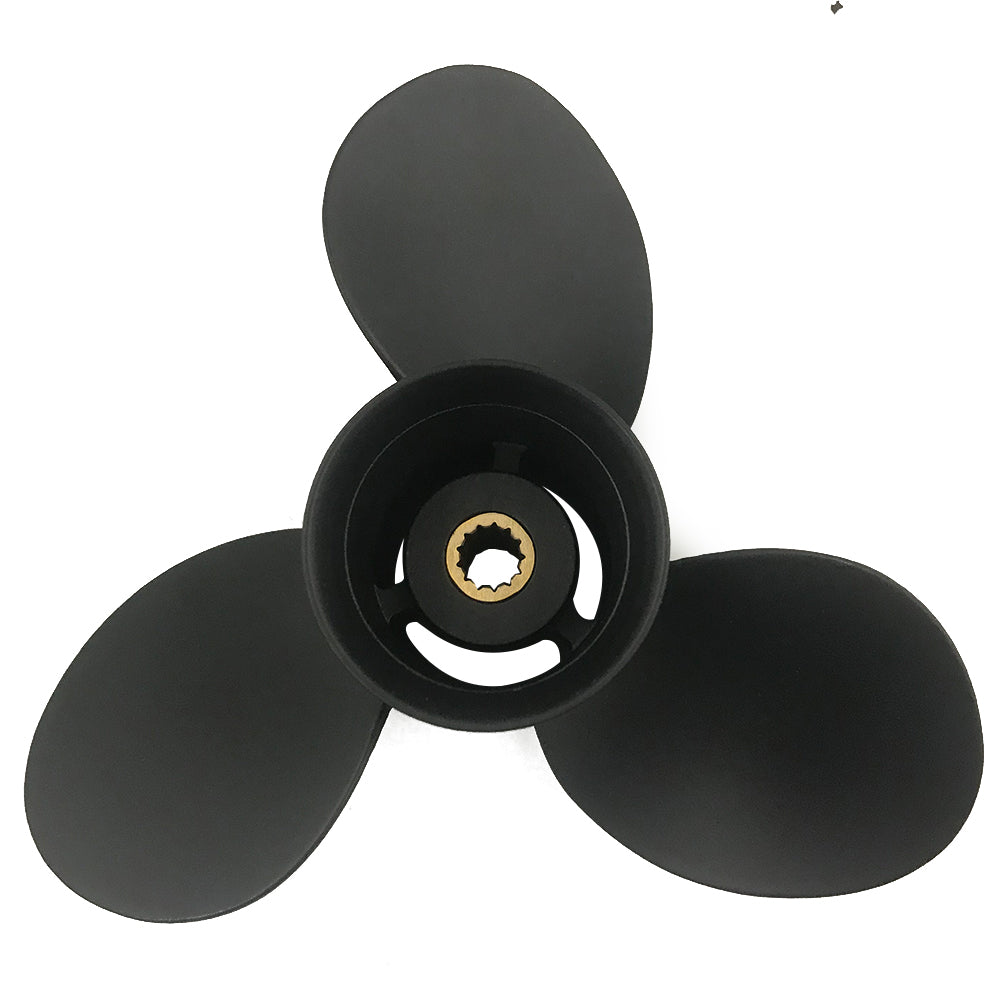Whether you're a fully certified officer of the sea or one who occasionally takes a quick spin across the waters, keeping the vessel in top shape ensures an effective, pleasant, and safe cruise on the water. One of the much-despised components is certainly the propellers, humbly converting engine power into thrust. Minor damages, however slight, including nicks, bends, or imbalance, render the boat less capable of good performance and safe fuel efficiency. This article discusses why the repair of the propellers shouldn't be seen as mere maintenance, but rather as a means to safeguard your investment, harness the full power of your vessel, and ensure a smooth and uninterrupted cruising experience. Below, we will examine the signs of a damaged prop, the risks of ignoring repairs, and the benefits of addressing a problem proactively.
The Importance of Propeller Repair for Safety

Understanding the Risks of Neglected Repairs
Neglecting one's propeller leads down an unfortunate chain of events that significantly affects both the performance and safety of a vessel. An impaired or inadequately maintained propeller causes inefficient thrust, resulting in poor fuel economy and increased operating costs. Imbalance or vibrations caused by a bent or chipped blade increase the stress levels on the drivetrain, leading to premature wear on critical components such as the transmission or engine mounts.
A compromised propeller prevents the vessel from maneuvering optimally, especially when emergencies demand fast and accurate navigation. Furthermore, if allowed to pass unnoticed over time, what may have started as a small problem can almost certainly end in variations of catastrophic failure, leaving the vessel either stranded or more acutely damaged. Studies confirm vessels with well-maintained propellers are, therefore, much more efficient in execution and reliability, giving further substance to the merits of regular inspection and prompt repair to avert such perils.
Common Types of Damage to Boat Propellers
Boat propellers frequently encounter numerous environmental challenges, rendering them susceptible to various types of damage. One of the most common problems is the bending of blades after striking an underwater object, such as a rock or debris. Bent blades do not rotate uniformly; they induce vibrations that can reduce the efficiency of the power output and sometimes damage the drivetrain.
Another common occurrence is cavitation damage. Cavitation damage occurs when vapor bubbles form around the propeller due to localized areas of low pressure. These bubbles violently collapse, causing pitting and erosion on the blade surface. Over time, this deterioration can hamper the structural integrity of the propeller and reduce its efficiency.
Being prone to corrosion in salt or fresh water contexts, metals such as aluminum and bronze make for a corrosion-prone material choice for propellers. The deterioration of metals from such causes tends to accelerate, making protective coatings or sacrificial anodes imperative to mitigate the effect if applied promptly.
Hub damage is often considered due to excessive torque or misalignment. A damaged hub will reduce thrust transfer as it slips, resulting in decreased speed and fuel efficiency. An excellent understanding of these types of damages, coupled with regular inspection and maintenance, means longevity and operational reliability can be assured for that propeller.
How Prop Repair Affects Overall Marine Safety
The repair of propellers indeed represents a critical aspect of marine safety as it ensures that the vessel's performance remains top-grade and, conversely, that accidents due to mechanical failures are kept to a minimum. A damaged or malfunctioning propeller will negatively impact maneuverability and speed control, particularly when navigating through adverse conditions. For example, unbalanced propellers induce vibrational forces on the propulsion system, which can lead to catastrophic equipment failure if not addressed promptly.
Suppose studies again validate that abnormal propellers lead to higher fuel consumption demands. In that case, this variable represents an excessive operational cost, low economic DOS-F, and an environmental hazard, with a high DOS-E. Proper propeller repair ensures the vessel's efficient operation in open waters, promoting safety and environmental consciousness. Preventive measures for maintenance, including vibration analysis and visual inspection, identify damage at an early stage, thus reducing downtime and providing protection for the crew and cargo. Primarily emphasizing propeller repair and maintenance will improve vessel performance, as it is a basic safety prerequisite paramount to the maritime industry.
Different Types of Boat Propellers and Their Repair Needs

Stainless Steel vs. Aluminum Propellers
Aluminum propellers stand a chance against stainless-steel propellers as the most commonly used among boat propellers. Consider a few advantages and repair specifics, depending on particular properties. Aluminum propellers are lightweight and inexpensive, making them preferred for small vessels and recreational boats. A softer material, aluminum is easily damaged by bumping against submerged props, which can mainly cause bending or cracking of the aluminum propellers. Aluminum repairs tend to be easier and less expensive, but may need to be replaced if the damage is sufficiently severe.
Propellers made of iron and bronze are formed by casting with various degrees of finish. A stainless steel propeller is forged by hammering to produce blanking and by chilling the blades to harden them. The type of casting method and finishing materials employed will considerably affect the final propeller procured, which are discussed below.
For the most durable and sturdy propellers, stainless steel propellers are best recommended. They are hard to deform and can resist speed and torque much more, making them perfect for performance-oriented or commercial vessels. Stainless propellers, therefore, being an upfront cost and requiring other expensive methods of repair, such as welding or rebalancing, often provide a longer life and lower costs than aluminum propellers in terms of fuel expenses, owing to their rigidity and accurate performance. So, whether to use an aluminum or stainless steel propeller mainly depends on the vessel type, operating conditions, and budget, considering the best performance and repair possibilities available.
The Repair of Brass and Steel Props: What You Must Know
Repair of brass and steel propellers requires a specialized approach due to their distinct physical properties. Brass propellers, commonly used in marine environments due to their corrosion resistance, are softer and more malleable than steel. Compared to steel, they can suffer much easier deformation, pitting, and cracks under stress and impact. Repairs typically involve straightening the blades, filling in damaged areas through bronze-based welding methods, and grinding with precise measurements to restore the propeller's hydrodynamic efficiency. Proper attention must always be given during repairs to ensure correct pitch and balance so that any performance inefficiency or vibration does not occur.
Since steel propellers, particularly stainless steel versions, are considerably harder, they present special challenges during rectifications. Scenarios include blade bending or edge chipping, which require a more advanced type of welding, such as TIG (tungsten inert gas) welding, to maintain structural integrity and durability. Typically, post-weld machining is performed to ensure that the final blade geometry and surface finish meet the specified requirements. Non-destructive methods, such as ultrasonic inspection, are also applied to identify micro-fractures or stress points that may weaken the propeller over time.
Both brass and steel propellers require rigorous rebalancing to avoid imbalances that can cause vibrations, increase fuel consumption, or lead to wear of propulsion system components. Given the nature of such repairs, it is essential to work with certified marine propeller repair specialists to ensure that standards are met and the propeller is restored to optimal performance. Furthermore, the application of preventive maintenance practices, such as regular inspections and cleaning, can significantly extend the life of both brass and steel propellers and substantially reduce the need for major repairs.
Identifying the Right Prop for Your Boat
Selecting the right propeller for your boat is a crucial decision that significantly impacts factors such as performance, fuel efficiency, and engine life. Selection primarily depends on the engine's power, the boat's size, hull design, and intended use. Significant consideration must be given to key specifications, such as the diameter and pitch of a propeller, to work at maximum efficiency within the engine's operating range. A lower pitch provides a lot of power at slow speeds, making it ideal for use where towing or carrying heavy loads is essential. A higher pitch will be used when wanting to attain higher speeds. Another significant choice comes with the material; aluminum propellers are, of course, cheaper and lighter, making them suitable for casual use, while stainless steel ones are the stronger and more durable option when high performance or saltwater conditions are present. Using a prop that has been matched to your requirements will also lessen the chance of over-revving. This is an issue that could cause mechanical problems in the long run. Advances in technology have led to enhancements for modern propellers, including computer-aided design-induced cupping and progressive pitch adjustments, which optimize thrust and reduce cavitation in specific boating conditions.
Outboard Propeller Repair: A Step-by-Step Guide

Assessing Damage and Determining Repair Options
Outboard propeller damage assessment commences with a detailed visual examination of the propeller blades, the hub, and overall construction. Typical damage signs include bent blades, chipping, cracking, or severe wear and tear. A bent blade may compromise balance and thrust, with cracks, whether large or relatively minor, under stress may propagate to a disastrous failure. Discoloration or deformation around the hub may also indicate overheating or a structural compromise.
When deciding which repair option to pursue, consider key factors such as propeller material and the severity of the damage. Aluminum propellers are lightweight and inexpensive, but they bend easily and tend to crack. In contrast, those made of stainless steel offer better durability and require specialized repair techniques. Filing and polishing can restore the functional efficiency of propellers with slight nicks or surface scratches. Professional straightening with a hydraulic press may be necessary to correct bent blades and moderate deformation, followed by dynamic balancing to ensure optimal performance.
With extensive damage, such as severe crack formation, deeply gouged surfaces, or hub failure, replacement of the propeller would be the only solution to ensure that performance problems can be averted and safety hazards avoided. The choice to repair or replace should also be weighed against the cost, as there are instances when an aging propeller cannot be economically repaired repeatedly, and a new propeller may be a better investment. Advanced diagnostic techniques, such as laser scanning or 3-D imaging, can further enhance damage assessment, enabling the implementation of decisions that maximize performance and safety.
Precision Techniques for Effective Outboard Propeller Repair
An outboard propeller must undergo complex diagnostic procedures and technical adjustments to be effectively restored. Dynamic balancing is one such necessary procedure that ensures vibrations are not induced by the repaired propeller during operation, which can otherwise be detrimental to the engine's performance or its structural integrity. The process utilizes sophisticated technology to detect even the slightest weight differences between blades and apply appropriate corrections to ensure optimal rotational stability and efficiency.
Another such method is the reshaping of blades, which involves returning damaged blades to their original dimensions and geometry with extreme precision. Regrinding utilizes surface grinders and digital templates to replicate factory specifications, ensuring all blades exhibit a uniform performance characteristic. Proper reshaping ensures uniform propeller pitch, which is vital for both thrust and fuel efficiency.
Additionally, inspecting metallurgical integrity is crucial for diagnosing fractures or stress points that may have impacted long-term functionality. Testing with high-resolution methods, such as dye penetrant or ultrasonic inspections, enables technicians to detect cracks or markers of fatigue within materials that are invisible to the naked eye. This way, no structural weaknesses are left undiscovered through the repair.
With great attention to detail, these techniques will help technicians extend the operational life of outboard propellers, restore their performance, and cut downtime, thus guaranteeing vessel operators low-cost and dependable repair options.
When to Consider a New Propeller Instead of Repair
Repair techniques offer an economical means to extend the life of an off-board propeller; however, there are instances where installing a new propeller is the most viable or necessary option. Damage is one significant consideration to take into account. Large structural fractures, deformation, or corrosion beyond repair that affect its integrity mean it can never be restored to a safe and optimum performing state through the use of repairs. At other times, old-fashioned propellers may have materials or design characteristics that do not meet the efficiency standards or performance demands placed on vessels today.
Another important signal is a decline in performance despite repeated maintenance, with recurring issues such as slow speed buildup, low efficiency, or an increase in fuel consumption, which may be classic signs that indicate the need for an advanced propeller type. Some owners who switch to a new propeller can leverage new features in hydrodynamic design, such as materials like stainless steel or lightweight composites, as well as high-pitch jet blades to enhance performance and durability.
Generally, changing vessel usage, such as carrying heavier loads, working in different water conditions, or requiring more speed, creates a strong need for an upgrade in propeller that is particularly optimized for the new operational parameters. This approach to spending on a propeller not only enhances operational safety but also boosts efficiency in the long run.
Cost Considerations for Propeller Repair

Understanding Propeller Repair Prices
Several key factors influence the price of propeller repair. Among these are the extent of damages, the nature of the material, and the size and style of the propeller. Small repairs, such as removing minor dents from the blades or slightly bending them to reshape them, are typically inexpensive and can often be done without machining or welding. Big repairs, however, including fixing cracks in the blade or rebalancing the propeller, entail more work and will require specialized equipment, making them costly.
Another factor determining the repair charges is the material. For aluminum propellers, repairs tend to be cheaper as the material and labor costs are comparatively lower. Meanwhile, repairs tend to be more expensive for stainless steel and bronze, as it is not easy to do the work on these materials, and it is even harder to maintain the standards of propeller performance while doing it. In addition, larger and more complex blade geometries result in higher labor costs, which in turn lead to higher repair costs.
Finally, the geographical position and the presence of repair facilities would make some impact on the prices. A coastal area or some region with high marine commerce may offer discount repair costs due to an abundance of specialized services. In contrast, a remote location may command a premium due to transportation logistics or a lack of readily available expertise. By taking such factors into account, vessel operators can decide wisely in marginal issues of propeller repair or replacement, whether maintenance is worthwhile.
What Influences the Cost of Marine Propeller Repair?
Material Composition of the Propeller: The material composition of the marine propeller is a key factor influencing the repair cost. High-strength alloys, such as nickel-aluminum-bronze or stainless steel, require special tools and techniques for repairs, which is why the labor cost is higher. The availability of replacement materials for these alloy types may also affect the expense. Aluminum propellers may be cheaper to repair due to the availability of materials. Still, they may not be as durable as those made of stainless steel, which can incur higher maintenance costs over time.
Extent of Damage: The rate of damage or wear on a propeller greatly determines the repair cost involved. Minor dings and bends on a blade, or erosion of the blade's edge, can be addressed by welding or grinding for a short period, and these methods are relatively inexpensive. However, when you are looking to repair something that has major structural weaknesses, cracks, or is on the verge of being replaced, further expenses are incurred for the restoration process. For example, damages to the root area of a blade might have to be fully reconditioned or reconstructed, from whence the most expensive and time-consuming sort of repair is performed.
Size and Specifications: There is a need for the size of the propeller to be specified, along with repair pricing. Large propellers need extensive handling, support equipment, and labor, all of which increase repair costs. Specifications such as pitch, diameter, and blade geometry of the propeller also dictate the complexity of repairs. Costly precision adjustments, designed to restore the propeller to manufacturer-specified performance standards, employ advanced scientific considerations, particularly in hydrodynamic performance.
Technological Requirements: Modern marine propellers with complex geometries and coatings, such as antifouling or cavitation resistance, require cure technologies. Computerized diagnosis, disaster laser scanning, and precision CNC machining can restore damaged geometries, potentially increasing the repair costs. These technologies enable the perfect restoration of propeller performance, but they require technically skilled engineers and highly specialized facilities.
Environmental Regulations: Compliance with environmental and safety regulations tends to increase repair costs indirectly. Many areas have stringent laws for waste disposal, emissions, and the use of particular materials during repair operations. Repair shops are required to comply with these laws, which may involve the use of special equipment or procedures, thereby increasing operating costs. For instance, banning certain chemical cleaning agents or hazardous waste disposal can add a further cost burden on propeller repairs.
Knowledge of these interrelated factors and their individual impact on cost is crucial to ensure that marine propeller maintenance is conducted efficiently and economically while meeting performance and safety standards.
Budgeting for Regular Maintenance and Repairs
Effective budgeting for the regular maintenance and repair of marine propellers requires detailed consideration of both predictable and variable costs. Routine inspections are often conducted based on a preset schedule and typically involve non-destructive testing methods, such as ultrasonic testing or dye-penetrant testing. These inspections could cost anywhere from $500 to $1,500, depending on the vessel type and the size of the propeller. Additionally, preventive expenses for cleaning and polishing to prevent biofouling range from $1,000 to $5,000 per maintenance cycle.
Unscheduled repairs, by their very nature, tend to result in financial variability, depending on factors such as the severity of the damage, the need for emergency service, and the extent of the repair work. Extensive damage, such as bent blades, can easily exceed $10,000 for refurbishment, and replacement charges for a larger commercial vessel can go beyond $50,000. Labor and logistical issues, however, are situations that only increase inefficiencies and, consequently, the costs incurred by repairs, particularly for vessels operating in remote locations.
Typically, a maintenance reserve fund is created to safeguard against unexpected expenses. A 2 to 5 percent contribution based on the vessel's annual operational cost can help provide the funds required to handle repairs and maintenance, whether it is everyday or an emergency. In addition to reserving funds, predictive maintenance can minimize unplanned off-hire or loss of income should an extreme performance anomaly occur. Condition-monitoring systems act as an early warning to any deviation in operation performance, preventing the repair bill or downtime from becoming extraordinarily high. By combining fiscal management and detailed planning, a vessel operator can maintain performance norms within their repair and maintenance budget.
The Role of Fast Turnaround in Propeller Repair Services

Why Are Quick Repairs Important in Marine Adventures?
Having experienced this firsthand, quick repairs are crucial to marine adventures for the very reason that they reduce disruptions and ensure safety. Suppose a propeller or indeed other vital part is damaged during an expedition or cruise. In that case, a significant loss in her performance occurs, causing a delay in the execution of the plan or even stranding her in some desolate water. Quick repair turnarounds enable operators like me to get back into business, so this short downtime really remains brief, and the adventure continues with minimal interruption. Fast repairs may even prevent slight damage from escalating into greater damage, thus endangering the safety of the vessel and all those on board in the process.
With my travel knowledge, I have concluded that another interesting factor in repairing involves methods of cladding and welding the critical component with precision, using laser technology to make it faster and more durable. In other words, these methods repair the components quickly, allowing them to arrive on site and be used for essential operations. Simultaneously, they ensure an increase in the components' capacities, making further frequent interventions unnecessary in the short term. Expert technicians, well-versed in the physical dynamic principles that influence marine systems, must install repairs to the highest standards. Speed, technology, and expertise in repair services provide me with peace of mind under all sorts of aquatic conditions.
Ultimately, timely and efficient propeller repairs are instrumental in sustaining the success of marine adventures. From my vantage point, fast turnaround services equip operators to maximize vessel performance, ensure passenger safety, and work within tight schedules. Adopting a proactive mindset toward punctuality and efficiency in reducing operational disruptions is essential in the inherently unpredictable marine setting. Simple repairs are never enough; a comprehensive repair plan is indispensable for a smooth maritime experience.
Looking for Reliable Propeller Repair Nearby
When seeking trustworthy propeller repair services near me, I suggest starting with a fine-tuned approach using good online resources. Using Google, search key phrases such as "professional propeller repair near me" or "marine propeller repair services in [your location]." You would be presented with a list of service providers in your proximity, along with their ratings, reviews, and contact information. Give preference to businesses that earn good ratings from customers with extensive testimonials, as such feedback usually signifies good workmanship and service. Furthermore, check the certification or membership from a recognized marine organization, which may serve as testament to their credibility and specialized expertise.
Another approach suggests trying to ask local boating communities or online boating forums. These platforms often feature discussions, recommendations, and firsthand experiences from boat owners about the repair services available in their locality. Some repair shops maintain detailed websites that showcase their capabilities, including services such as propeller straightening, reconditioning, and balancing. Although it is worth taking a look at these sites to gauge their technological up-to-dateness and professional adherence to industry standards, do remember that proximity does not mean offset by less distance - it is a combination. Choose a repair shop with an excellent reputation and a reasonably prioritized turnaround time, saving you ounces of downtime and allowing your vessel to perform excellently.
Before making the final decision, contact the service providers on your shortlist and ask targeted questions about their repair procedures, equipment used, and approximate turnaround times. A price quote would also be helpful for you to compare costs and determine which ones give value for money. Second, taking the time to select the right skilled and trustworthy repair specialists will ensure your propeller remains functional and in prime condition, thereby saving you from any further interruptions or expensive replacements.
Shipping Options: What to Expect for Propeller Repair Services
Take care to package this propeller properly so that it does not sustain damage during transport. For packages, I generally use heavy-duty corrugated boxes with cushioning materials such as foam or bubble wrap, with the intention of securing the blades and hub against movement or impact. Some repair companies might thus offer instructions for packing or shipping kits to comply with their specifications. Checking these beforehand would be better, as it will save time and avoid any complications. Clear labeling of the package, including the necessary documentation, such as the repair request form or service agreement, helps ensure a smoother procedure.
Most repair services are associated with major shipping carriers such as UPS, FedEx, or USPS for delivery arrangements. Depending on the distance and the urgency of the repair, my choices typically range between standard ground shipping and expedited services, such as overnight. Expedited shipping may cost more, but it saves downtime, which is crucial in time-sensitive situations. Generally, tracking services are included in the shipment, allowing me to monitor the progress and delivery time.
A different term to consider in expenses is the cost of shipping, as it depends on the size, weight, and destination of the package. I want to be drawing my plans from an exact shipping estimate beforehand. Some companies even provide return shipping at a discount or for free, depending on the service they are rendering to you. Thus, being aware of shipping options and preparing the package well will not only ensure that the propeller safely reaches the repair workshop but also help expedite the repair process.
Reference Sources
-
Hull2Prop - Replacing Vs. Repairing A Boat Propeller: Discusses the benefits of timely repairs to minimize downtime and maintain vessel performance.
-
Marina Bay Harbor - Understanding Boat Propeller Damage: Highlights the importance of addressing propeller damage promptly to protect the engine and overall performance.
-
Orlando Boats - Prop Repair & Replacement in Sanford, FL: Explains how routine maintenance can prevent costly downtime and protect your investment.
-
Orlando Boats - Prop Repair & Replacement Orlando, FL: Emphasizes the value of early detection and correction of propeller issues through regular maintenance.
-
Hull2Prop - The Essentials Of Boat Propeller Repair: Provides practical tips for identifying and addressing propeller flaws to ensure optimal performance.
Frequently Asked Questions (FAQs)
What is the outboard propeller repair process?
The outboard propeller repair process involves several steps to get your propeller back in the water quickly. First, a thorough inspection of any prop damage will be conducted, which may include examining bent blades or hub issues. Extensive repairs may require welding; however, such operations should preserve propeller balance and performance. Other work may require pitch adjustment or part replacement, such as the skeg, if it is damaged. The next step involves testing and approving the prop for optimal performance, according to the specifications set for your boat's performance. Repairs here typically offer a quick turnaround from inception to completion, thereby minimizing downtime for boat owners.
How to bring your propeller back to its original performance?
As with any underwater gear repair, restoring a cutter to its original performance requires professional workmanship with specialization in marine propeller repair. Technicians will inspect the propeller and analyze it for cavitation or drag that may affect performance. The blades will very likely be reshaped and balanced using precision instruments to ensure excellent performance. Hence, if your prop is stainless steel or aluminum, such repairs will last much longer than with brass options. You may wish to consider purchasing from reputable propeller sales outlets in the event of significant damage to your propeller. In doing so, you can be sure your boat will again be running in peak condition.
What are some average prices for boat propeller repairs?
Boat propeller repair prices here and there also vary greatly depending on the extent of damage and the type of propellers. Minor repairs, such as blade straightening or pitch adjustment, may end up costing less than $100. Bigger jobs, such as skeg repair or a full refurbishment of a high-performance prop, might start at a few hundred dollars. The materials your props might be made from, such as stainless steel or aluminum, are another critical factor that influences the costs, production materials, and equipment of the selected repair shop. Therefore, it would be beneficial to obtain several quotes from various repair shops to be sure you are getting a good price. Always ask if the repair shops offer any guarantees on their workmanship because high-quality work will save you money in the long run.
What materials are used in new propeller manufacturing?
Depending on the correct propellers for the new boat, they are typically made of different materials, each of which enhances the boat's performance in a distinct way. Stainless steel, aluminum, and bronze are popular materials, with stainless steel being the preferred choice due to its exceptional durability and corrosion resistance. Aluminum is usually lighter and thus cheaper, making it more popular with recreational boats. Bronze, while great strength-wise, is usually better suited for heavy-duty purposes. When buying a new propeller, consider what you use your boat for, such as speed, acceleration, or fuel consumption, to choose the suitable material for your specific needs. The material used will significantly impact how well your boat performs.
How do I choose the right propeller for my boat?
This way, the propeller chosen will be ideally suited for the vessel's performance. The specifications of the boat are thus ideally considered: its size, power capacity, and intended use, such as wakeboarding or fishing. The pitch of the propeller is fundamental; the greater the pitch, the better the speed, while acceleration can be enhanced with smaller pitch. There are several other considerations, such as the number of blades. A four-blade prop, for instance, might provide more grip and a smoother ride than a three-blade one. Another consideration is spending time at a prop shop or consulting with a marine expert who can combine this information with your boat's design to identify the best options for achieving your performance goals. The result is the propeller that best allows smooth handling and efficient operation of your boat.
What do I need to know about shipping new propellers?
It is essential to consider the shipping and logistics involved when ordering new propellers, as one wants the entire process to proceed smoothly. Most companies selling propellers offer expedited shipping, allowing you to receive your new propeller as soon as possible. However, be sure to check the shipping policies, especially when you purchase a propeller made from stainless steel or aluminum. These could be heavier materials, which may incur steeper shipping charges. Inquire about the tracking options so you can stay informed about the current status of your order. Lastly, find a company that provides good packaging to help keep the items from getting damaged in shipping, so your new propeller will arrive ready to install.
